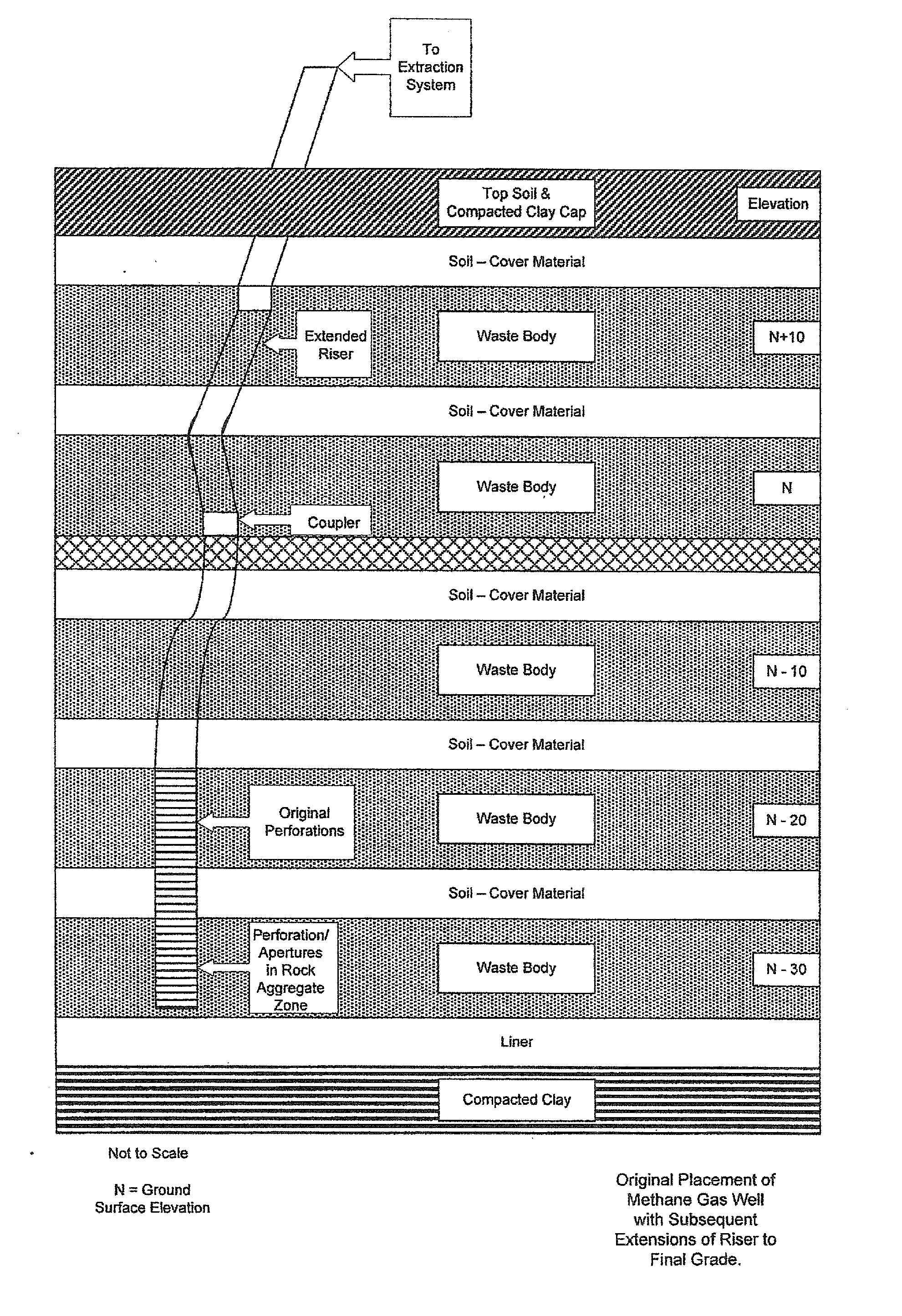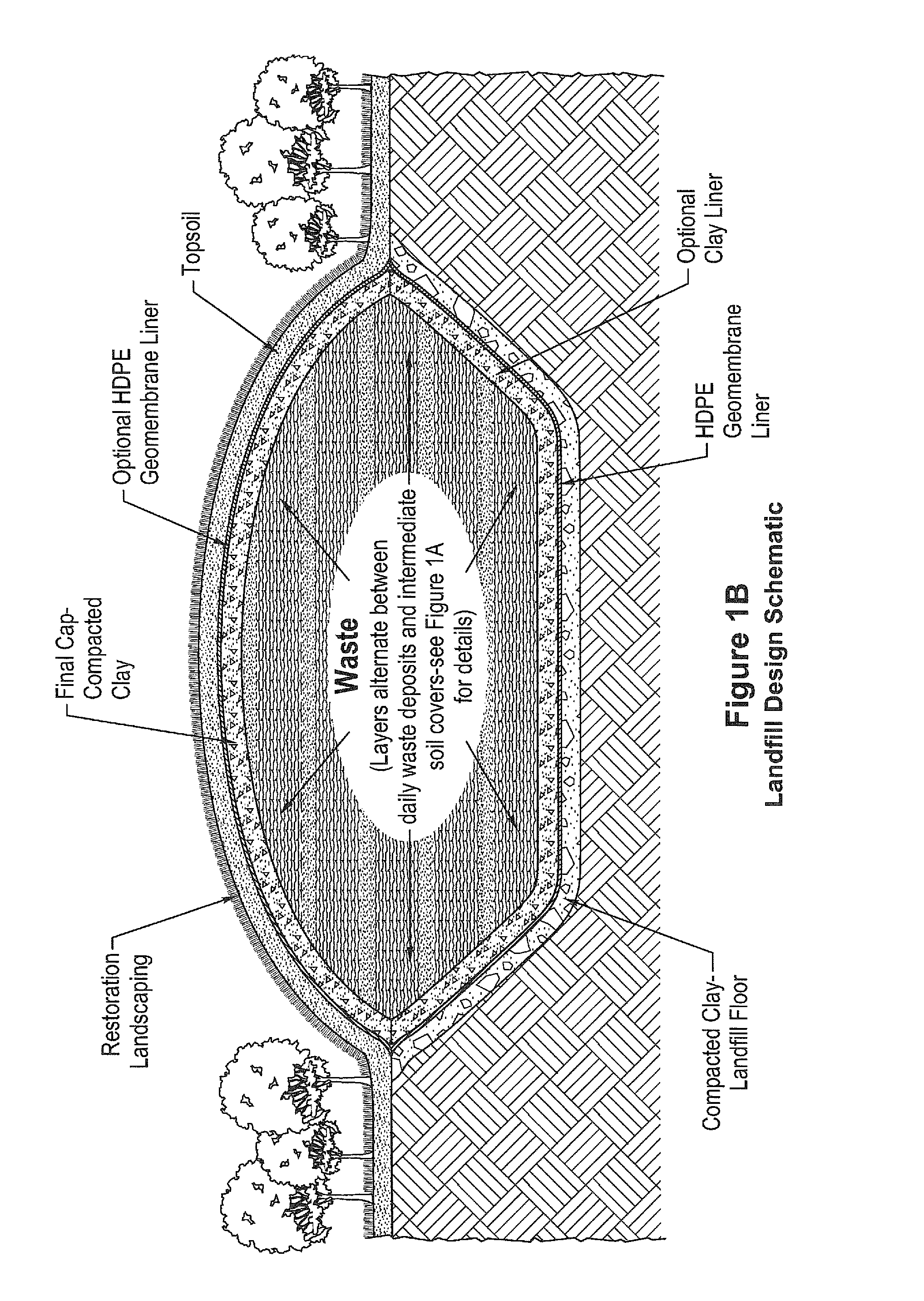Method for extracting landfill gas
a landfill gas and gas extraction technology, applied in fluid removal, borehole/well accessories, mining structures, etc., can solve the problems of escaping lfg emissions, wasting capital, and unable to capture and use a significant energy source, and achieve efficient and effective recovery of lfg. , the effect of enhancing the recovery of lfg
- Summary
- Abstract
- Description
- Claims
- Application Information
AI Technical Summary
Benefits of technology
Problems solved by technology
Method used
Image
Examples
Embodiment Construction
[0032]FIGS. 1A-1C are schematic depictions of landfills and the use of LFG recovery wells. The basic structure of a landfill includes a floor and sidewalls of compacted clay, typically covered with a high density polyethylene (HDPE) polymer liner. Another layer of clay is added to protect the inside of the layer. Layers of waste alternated with clay or soil layers covering the waste will be added to the empty landfill (See FIGS. 1A and 1B). Once a landfill has reached a certain capacity, LFG recovery wells are installed and LFG is extracted from decay and decomposition of waste layers. Generally, a LFG recovery well may be installed by the following method. A bucket auger rig is used to drill a borehole through the waste body. Perforated pipe / screen and riser are lowered into the borehole and set in place. Gravel or rock aggregate is introduced into the annular space between the pipe and the borehole via standard well installation techniques. The level of gravel or rock aggregate is...
PUM
 Login to View More
Login to View More Abstract
Description
Claims
Application Information
 Login to View More
Login to View More - R&D
- Intellectual Property
- Life Sciences
- Materials
- Tech Scout
- Unparalleled Data Quality
- Higher Quality Content
- 60% Fewer Hallucinations
Browse by: Latest US Patents, China's latest patents, Technical Efficacy Thesaurus, Application Domain, Technology Topic, Popular Technical Reports.
© 2025 PatSnap. All rights reserved.Legal|Privacy policy|Modern Slavery Act Transparency Statement|Sitemap|About US| Contact US: help@patsnap.com



